Choosing the suitable fabric is pivotal when diving into the art of appliqué. The ideal fabric for appliqué seamlessly blends versatility, ease of use, and aesthetic appeal.
Cotton, renowned for its adaptability, emerges as a preferred choice, accommodating various project demands with its varied weights and vibrant color retention.
With its luxurious texture, Wool adds depth to designs, particularly enhancing warmth in quilts. Felt, celebrated for its no-fray edges, proves practical and budget-friendly for intentional raw-edge designs.
Linen, timeless and elegant, imparts sophistication, while batik fabrics create visually stunning and dynamic appliqué pieces with their wax-resist dyeing process.
Crafting success begins with carefully selecting a fabric that aligns with your creative vision and project requirements.
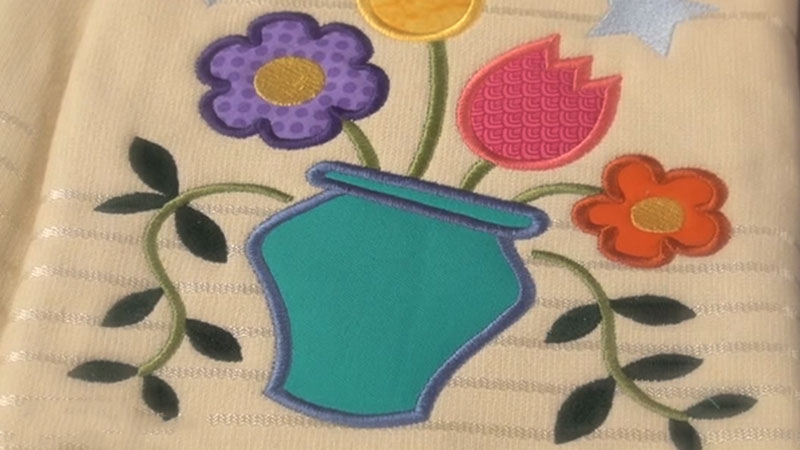
What Fabric Is Best for Appliqué?
The ideal fabrics for appliqué projects are small pieces commonly called “fabric scraps,” each measuring no more than 12 inches square.
Choosing the suitable fabric is crucial for achieving a successful and visually appealing appliqué design.
Cotton fabric, known for its versatility and ease of handling, is widespread. Its tight weave allows for clean edges and prevents fraying, making it suitable for intricate appliqué work.
Additionally, batik fabrics provide a unique visual appeal to appliqué projects with their vibrant colors and distinctive patterns.
Other preferred options include Wool and felt, which offer a soft and textured surface, enhancing the tactile experience of the appliqué.
These fabrics adhere well to one another, facilitating the layering process in appliqué designs. When selecting fabrics, consider their colorfastness, as appliqué pieces may undergo washing.
Ultimately, the best fabric for appliqué combines durability, manageability, and aesthetic qualities to bring creativity to life in a charming and enduring manner.
How to Make an Applique?
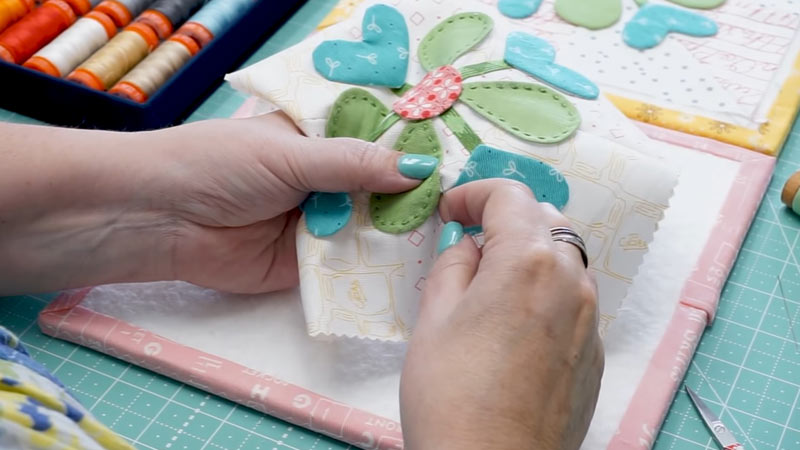
Appliqué is a decorative technique that involves attaching fabric pieces onto a larger fabric surface to create patterns, designs, or pictures.
It’s a versatile and creative way to add embellishments to clothing, home decor items, or quilts.
Here’s a step-by-step guide on how to make an appliqué:
Materials Needed:
- Fabric.
- Fusible Web.
- Scissors.
- Pencil or Fabric Marker.
- Iron and Ironing Board.
- Sewing Machine and Thread.
Steps:
Design Your Appliqué
Start your appliqué journey by exploring various designs. Whether you opt for a classic shape, intricate pattern, or a whimsical motif, sketching your idea on paper will help refine your vision.
Consider the purpose and context of your project. Simple designs often work well for beginners, while more complex patterns might suit more extensive statement pieces.
Additionally, contemplate the size and placement of your appliqué to ensure it complements your overall project aesthetically.
Select Fabrics
The fabric selection process is crucial to the success of your appliqué. Choose materials that not only harmonize with each other but also align with the nature of your project.
If you’re embellishing clothing, opt for lightweight fabrics; sturdier options may be preferable for quilts or home decor.
Pay attention to color, texture, and pattern to create a visually appealing combination that enhances the overall impact of your appliqué.
Prepare the Fusible Web
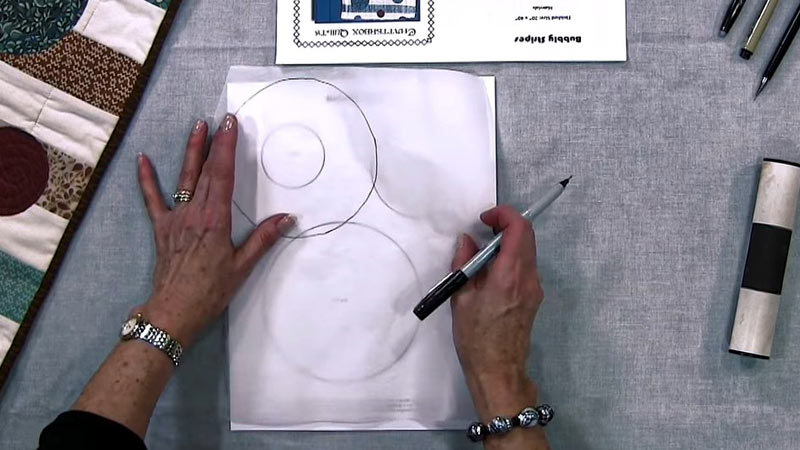
Prepare your chosen fabric by applying a fusible web. This thin, adhesive-backed material will help bond the fabric layers when heated.
Cut the fusible web slightly larger than your fabric piece, then carefully adhere it to the wrong side of the fabric using an iron.
Follow the manufacturer’s instructions to ensure proper adhesion. This step not only secures the appliqué but also streamlines the attachment process later on.
Trace and Cut Out the Appliqué
With your design in mind, trace it onto the paper side of the fusible web using a pencil or fabric marker.
Precision is critical during this step, as the accuracy of your cutting will significantly impact the final appearance of the appliqué.
Take your time cutting along the traced lines, ensuring clean edges and accurately representing your chosen design.
Peel Off Paper Backing
Once your appliqué design is meticulously cut out, it’s time to peel off the paper backing from the fusible web.
This reveals the adhesive side of the fabric, preparing it for attachment to the background fabric. Handle the cut-out pieces with care to maintain their shape and integrity.
Position and Iron the Appliqué
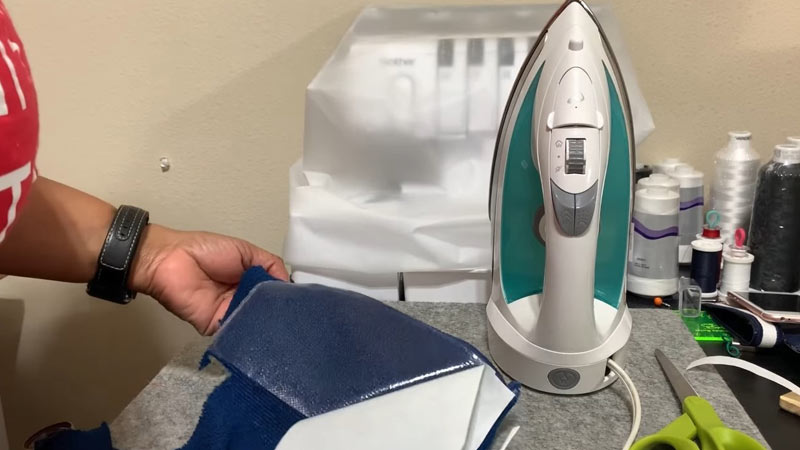
Position the appliqué on the chosen background fabric according to your design plan. With the adhesive side down, carefully iron the appliqué in place.
The heat activates the fusible web, creating a secure bond between the appliqué and the background fabric.
Take your time during this step to ensure proper alignment and a smooth, well-adhered finish.
Secure with Stitching
While the fusible web provides initial adhesion, reinforcing your appliqué with stitching adds both durability and a decorative touch.
Use a sewing machine or hand-sewn around the edges, using a tight zigzag or blanket stitch, depending on your preference.
This step not only enhances the longevity of your appliqué but also adds a personalized, handcrafted element to your project.
Finishing Touches
With the appliqué securely attached, take a moment to trim any excess fabric or threads for a polished appearance. A careful trimming process contributes to your project’s overall neatness and professionalism.
Finally, press the entire piece with an iron to set the appliqué firmly in place, completing your creation with a refined and cohesive look.
Top 5 Best Fabrics for Applique
Selecting the suitable fabric is crucial when creating beautiful and durable appliqué projects. The choice of fabric can impact the overall look, feel, and longevity of your appliqué design.
Here are the top 5 fabrics commonly used for appliqué:
1. Cotton Fabric
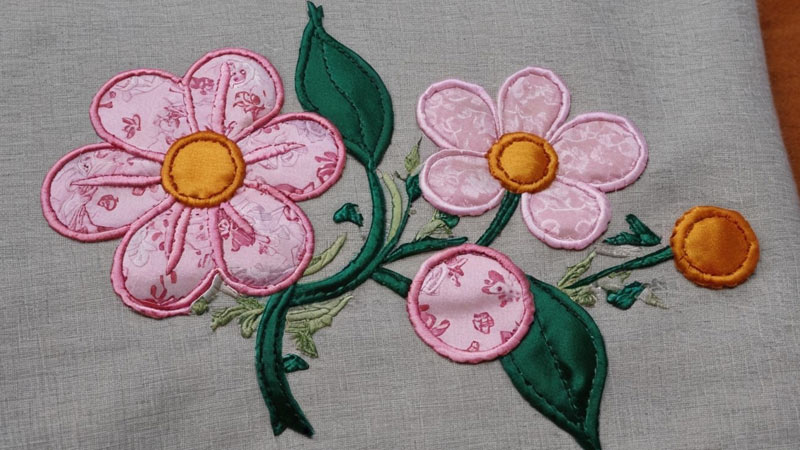
Cotton is a top choice for appliqué due to its versatility and user-friendly nature.
It is available in various weights and caters to diverse project requirements, making it suitable for delicate, lightweight designs and robust, heavy-duty applications. Its ease of use makes it particularly favored among beginners.
Cotton holds shapes well during the appliqué process and boasts excellent color retention, ensuring that your appliqué designs maintain their vibrancy and longevity over time.
2. Wool Fabric
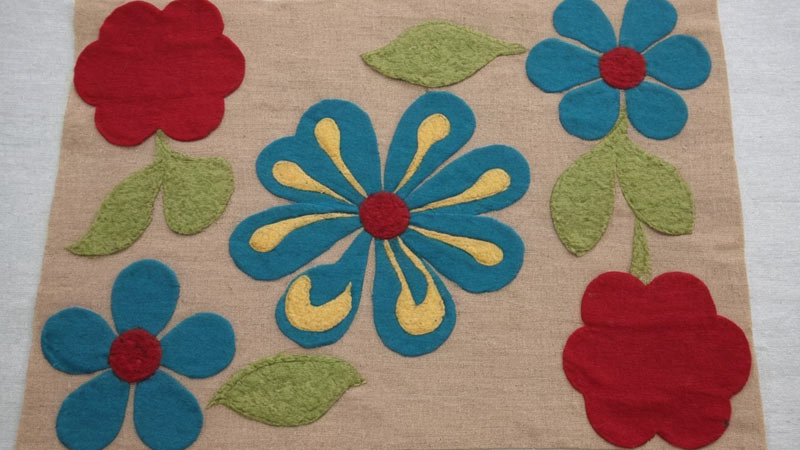
Wool introduces a luxurious touch to appliqué projects, elevating them with texture and depth. Its soft and cozy feel makes it an ideal fabric for creating warm designs, particularly well-suited for quilts and winter-themed projects.
The inherent softness of Wool enhances the tactile experience, making it a preferred choice for appliqué projects involving items like blankets, pillows, or clothing. The richness of Wool adds an extra layer of sophistication to your creations.
3. Felt Fabric
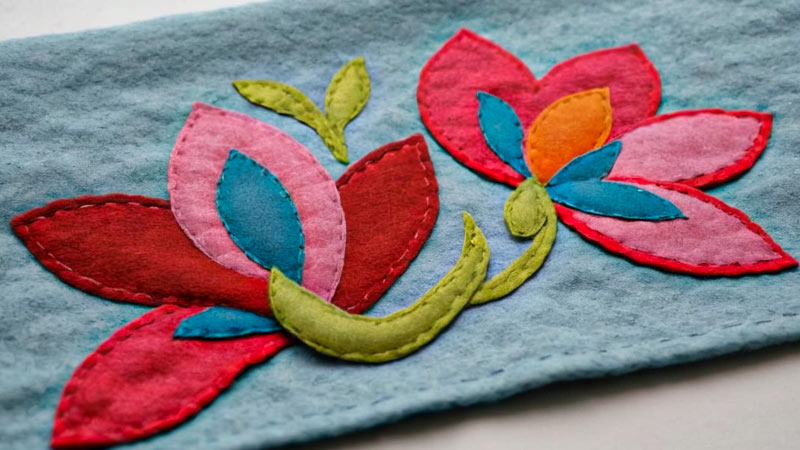
Felt, a non-woven fabric, shines in the realm of appliqué for its unique characteristics. Celebrated for its no-fray edges, it becomes an excellent choice for projects where raw edges are intentionally part of the design.
Beyond its practicality, felt is also a cost-effective option, making it suitable for budget-friendly appliqué endeavors, especially those involving larger designs. Its smooth surface and easy manageability contribute to its popularity in crafting.
4. Linen Fabric
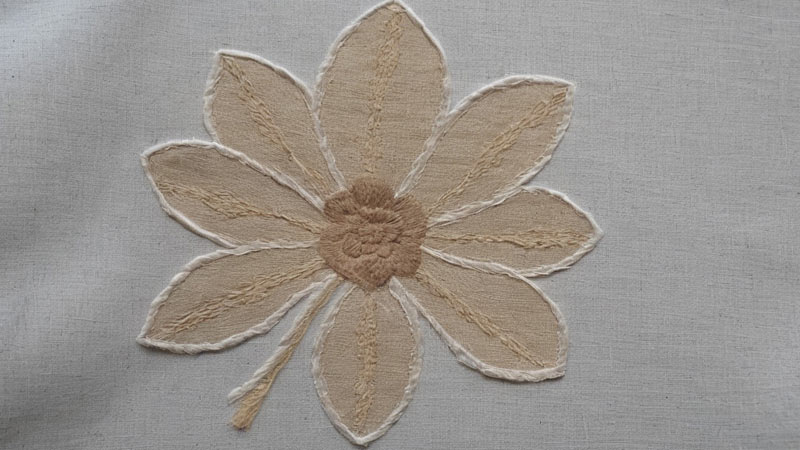
Linen, a timeless and elegant fabric, brings a touch of sophistication to appliqué projects. Its beautiful drape and slightly textured surface contribute to a refined appearance, making it an excellent choice for projects where a sophisticated look is desired.
Linen’s natural breathability adds to its appeal, making it suitable for clothing appliqué. The ability of linen to allow air circulation ensures comfort when worn, making it an excellent option for apparel embellishments.
5. Batik Fabric
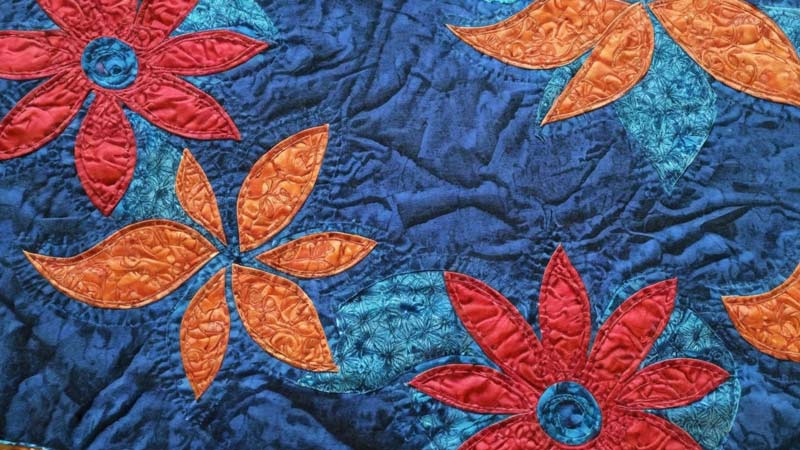
Batik fabrics are distinguished by their unique designs created through wax-resist dyeing. This method results in intricate patterns and vibrant colors, adding an artistic flair to appliqué projects.
The distinctive nature of batik fabrics, including color variations and dynamic visual elements, makes them captivating.
Appliqué designs using batik fabrics become embellishments and artistic expressions that stand out with a rich and unique aesthetic.
How to Choose the Best Fabric for Appliqué?
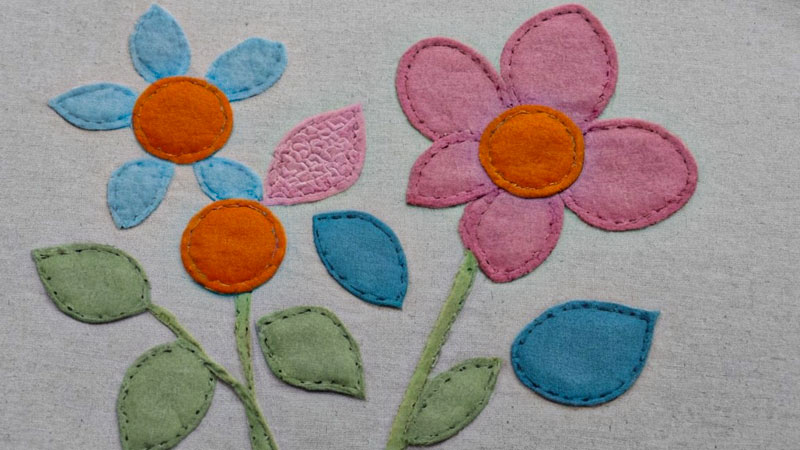
Choosing the best fabric for appliqué is a crucial step that significantly influences the outcome of your project.
Here’s a guide on how to make informed decisions when selecting fabric for your appliqué endeavors:
Consider Project Type
Selecting the suitable fabric begins with understanding the nature of your project. For clothing appliqué, lightweight and breathable fabrics like cotton are often preferred to ensure comfort and wearability.
On the other hand, if you’re working on a quilt or home decor item, heavier fabrics such as Wool may be more suitable, providing warmth and durability.
Tailoring your fabric choice to the specific demands of your project ensures both aesthetic and functional success.
Think About Texture and Design
The texture of the fabric contributes significantly to the overall visual and tactile experience of your appliqué. Wool, known for its softness and warmth, adds a luxurious touch, making it ideal for cozy designs.
Fabrics with unique designs, such as batik fabrics created through wax-resist dyeing, can introduce an extra layer of visual interest.
Consider how the texture and design align with the theme and purpose of your appliqué project.
Evaluate Color and Pattern
Color and pattern choices can make or break an appliqué design. Consider the color scheme of your overall project and how the chosen fabric complements or contrasts with it.
Small, intricate patterns work well for detailed designs, while solid colors can provide a clean and classic look. Striking the right balance between color and pattern ensures that your appliqué stands out harmoniously.
Consider Fabric Characteristics
Each fabric type comes with its own set of characteristics. Cotton is prized for its versatility, ease of use, and color retention. Linen, with its slightly textured surface, adds elegance and drapes beautifully.
Felt, being non-fraying, is an excellent choice when raw edges are a part of the design. Understanding these characteristics enables you to choose a fabric that aligns with the specific requirements of your appliqué project.
Test Before Use
Before committing to a fabric, it’s essential to conduct a test to ensure compatibility with your chosen appliqué method. Whether using fusible web or stitching, different fabrics may respond differently.
Testing allows you to observe how the fabric behaves during application, helping you avoid potential challenges and ensuring a successful and durable outcome.
Think About Intended Use
The intended use of your finished project should influence your fabric choice. If you’re creating clothing, consider fabrics that are visually appealing and comfortable against the skin.
Factors like durability, weight, and care requirements become more significant considerations for quilts or home decor items.
Aligning your fabric choice with the purpose of your project enhances its functionality and longevity.
Personal Preference
Your personal preferences as a creator are vital in the fabric selection. If you have a favorite type of fabric or a preferred aesthetic, incorporating these preferences can make the creative process more enjoyable.
Working with fabrics that resonate with you personally often leads to projects that reflect your unique style and vision.
Experiment and Learn
Embarking on a journey of experimentation with different fabrics contributes to your growth as a crafter.
Trying out various options helps you understand each fabric’s unique characteristics and how they interact with your chosen appliqué technique.
Embrace the learning process, and don’t be afraid to push creative boundaries. Each experiment is an opportunity to refine your skills and discover new possibilities.
FAQs
What Is Applique?
Appliqué is a decorative technique in sewing and crafting where fabric pieces are sewn or attached to a larger fabric surface to create patterns, designs, or pictures.
Can I experiment with different fabrics for appliqué?
Yes, experimenting with different fabrics is encouraged in appliqué. Testing various options allows you to understand each fabric’s unique characteristics and how they interact with your chosen appliqué technique.
What types of fabric are suitable for clothing appliqué?
Lightweight and breathable fabrics such as cotton are ideal for clothing appliqué.
Cotton’s versatility, ease of use, and color retention make it famous for creating comfortable and visually appealing appliqué designs on garments.
To Recap
The choice of fabric profoundly influences the success of any appliqué project. Each fabric brings unique characteristics to the creative process, providing a spectrum of options for artists and crafters.
Whether opting for the versatility of cotton, the luxurious texture of Wool, the practicality of felt, the timeless elegance of linen, or the visually dynamic appeal of batik fabrics, the key lies in aligning the material with the project’s specific demands.
The art of appliqué thrives on the synergy between design vision and fabric selection. Ultimately, the best fabric for appliqué is the one that transforms your creative ideas into enduring and visually striking works of art.
Leave a Reply